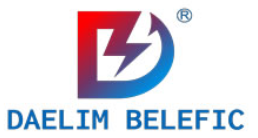
Pad Mounted Transformers Components, Parts, And Basic Data
2022-02-15 | Exhibition Information
Daelim as a professional power transformer manufacturer, we can support customized designs based on customers’ project needs. With the fastest lead time and 2 years warranty, but before sending your inquiry to us, what components, parts, and basic technical data do you need to know about Padmounted Transformers? Check out today’s article to learn more:
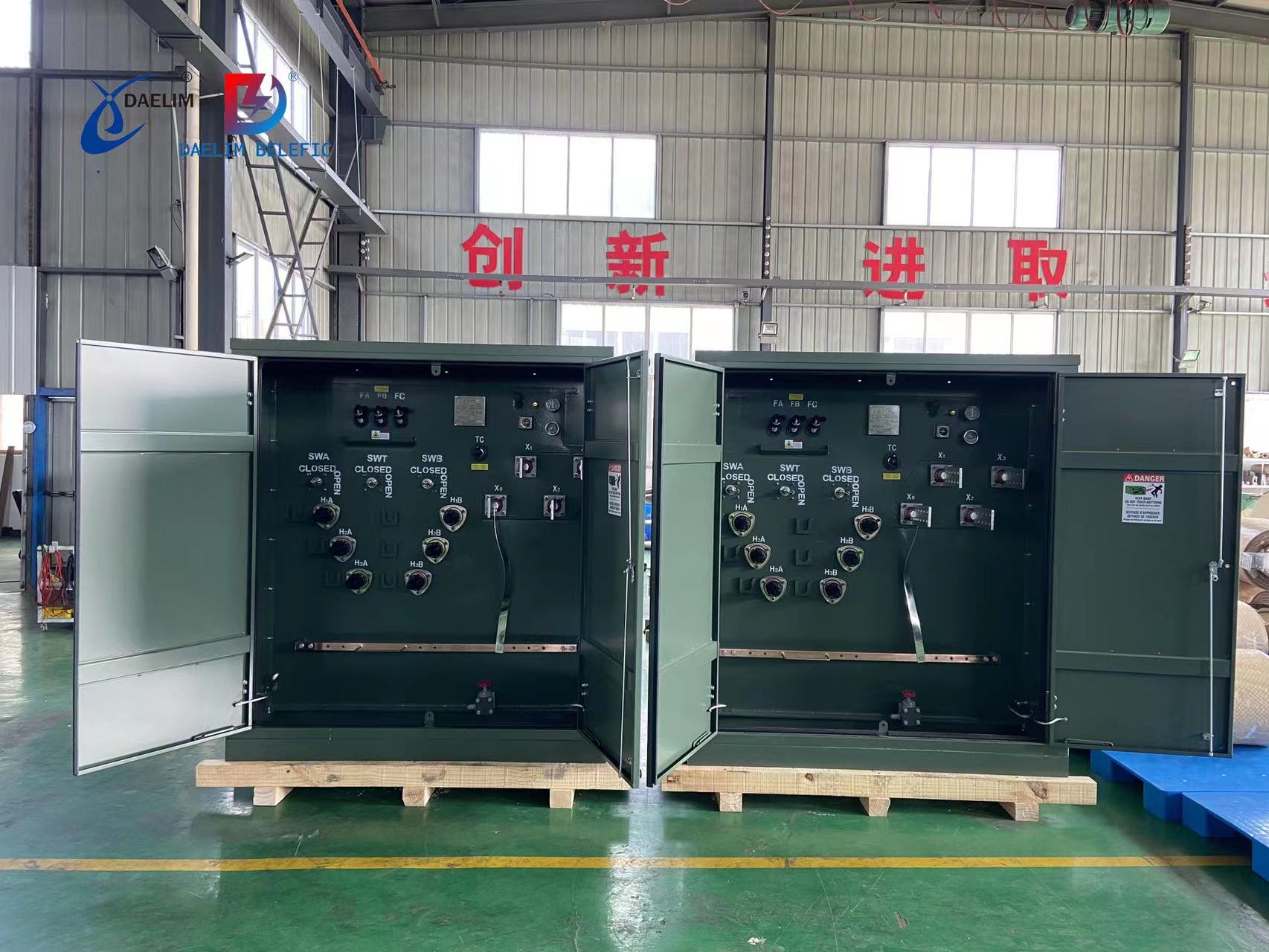
FUSES of Padmounted Transformers
There are two types of fuses in padmounted transformers: Bay-O-Net fuse and ELSP fuse.
A bayonet fuse is better for use in a two-fuse protection plan with a current-limiting backup fuse... The two fuses are connected into series and are harmonious so that the current-limiting fuse conducts only upon internal equipment failure.
Most distribution cutouts have fuse characters made from tin or silver alloy wires that melt when exposed to a high enough current. To reduce surge duration and damage to the transformer and fuse holder, the released spring pulls the fuse link out of the fuse holder tube when the fuse blows.
Inside of pad-mounted transformer, there are ELSP fuses, also called current-limiting fuses. Most Pad-mounted Transformers have 3 of Bay-O-Net fuses and 3 fuses, they are the protection parts for the Pad-mounted Transformer.
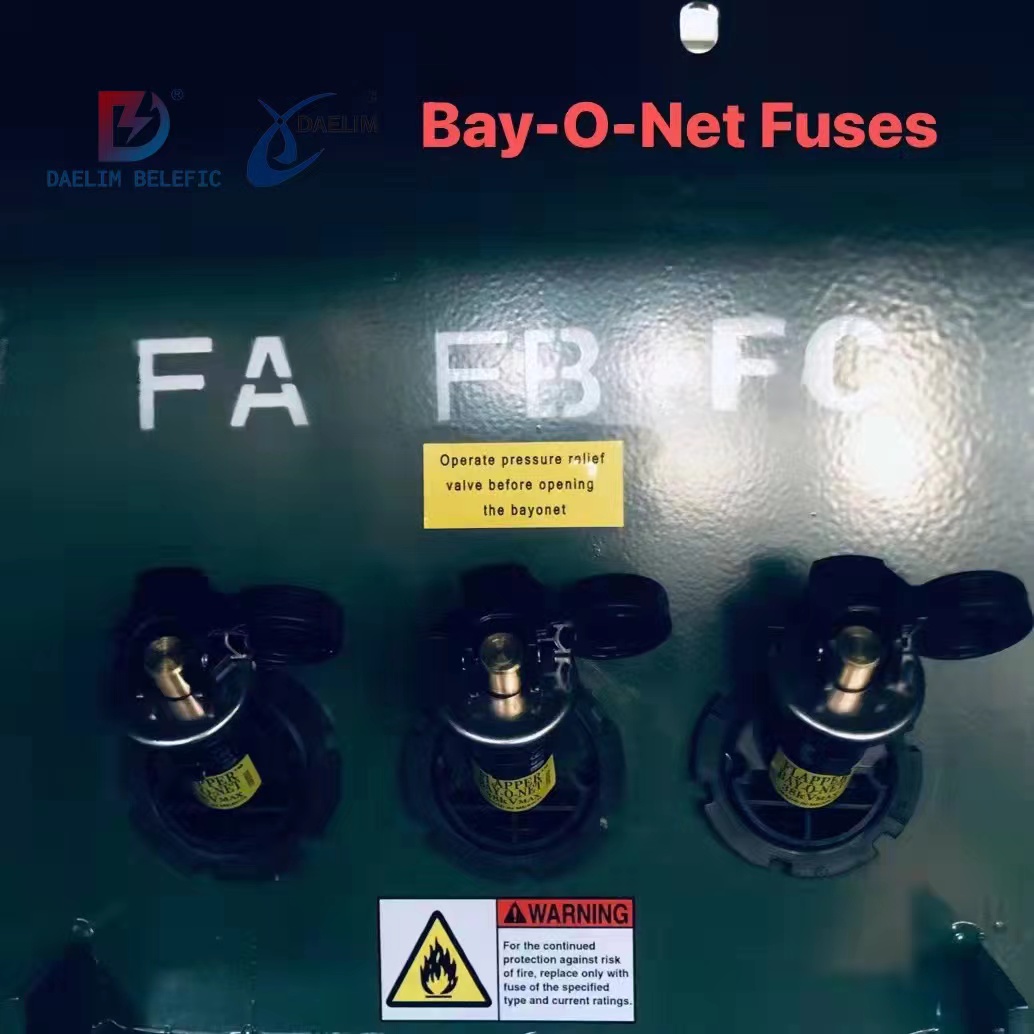
Core and Coil of Padmounted Transformers
During the current flow through the windings of the transformer, known as coils, the core provides a controlled path for the magnetic flux created within the transformer. Electrical power is sent to the load from the output side or secondary side of the transformer.
Transformers with cores have windings built on two limbs and one flux path, and windings circumvent the core. Typically, high voltage transformers are used in transmission and distribution systems, as well as in automatic transformers.
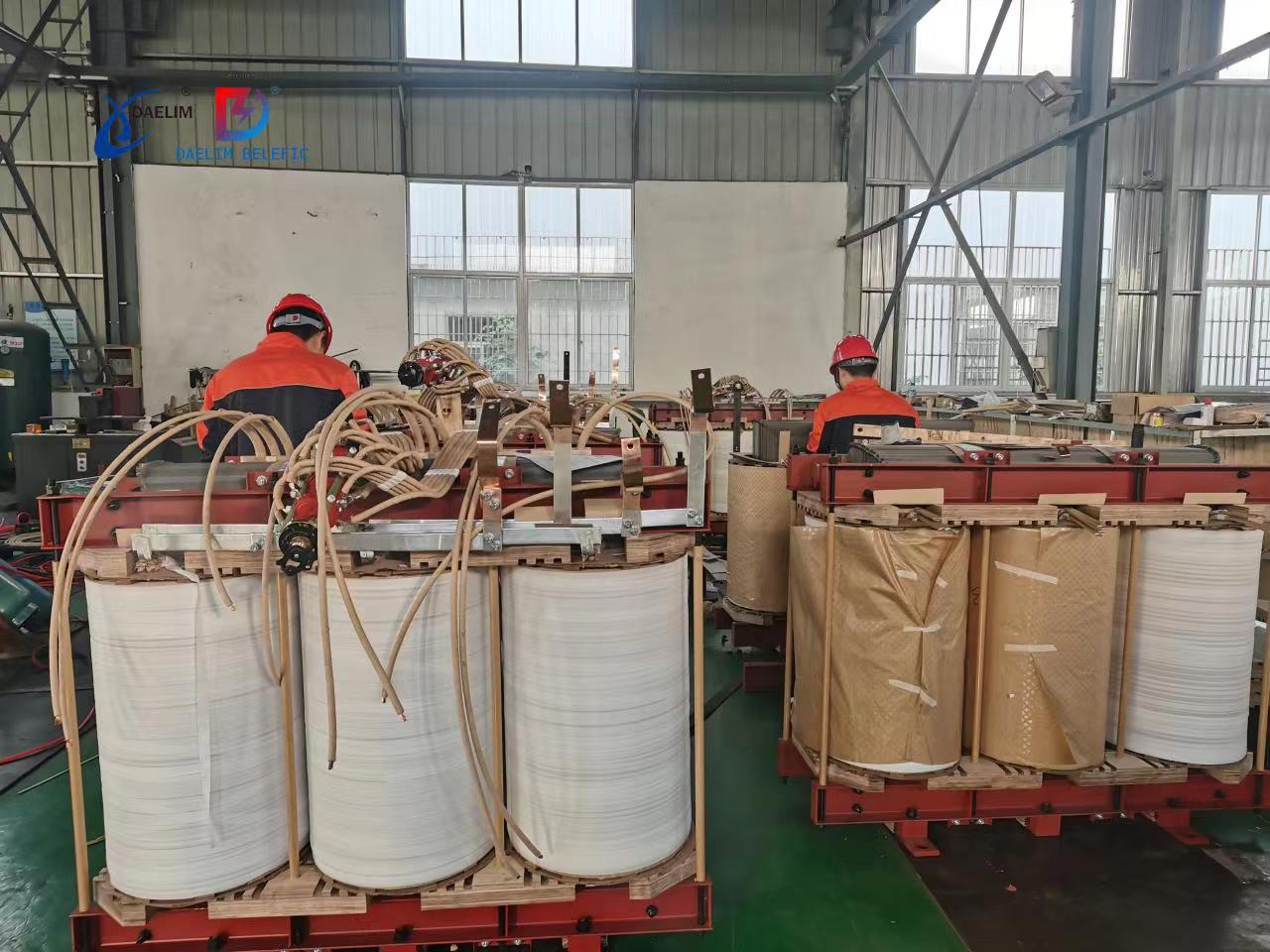
HV LV Bushings of Padmounted Transformers
Transformer bushings are insulating structures that allow current-conducting conductors to pass through the grounded tank of the transformer. Transformer high voltage windings have bushings that are capacitor-graded, designed for higher voltage ratings.
There are High voltage bushings and Low Voltage bushings (also called low voltage terminals).
In the high voltage part, there are loop-feed design (6 HV bushings) and radial-feed design (3 HV bushings). For bitcoin mining farms, customers usually use a loop-feed design in the high voltage part.
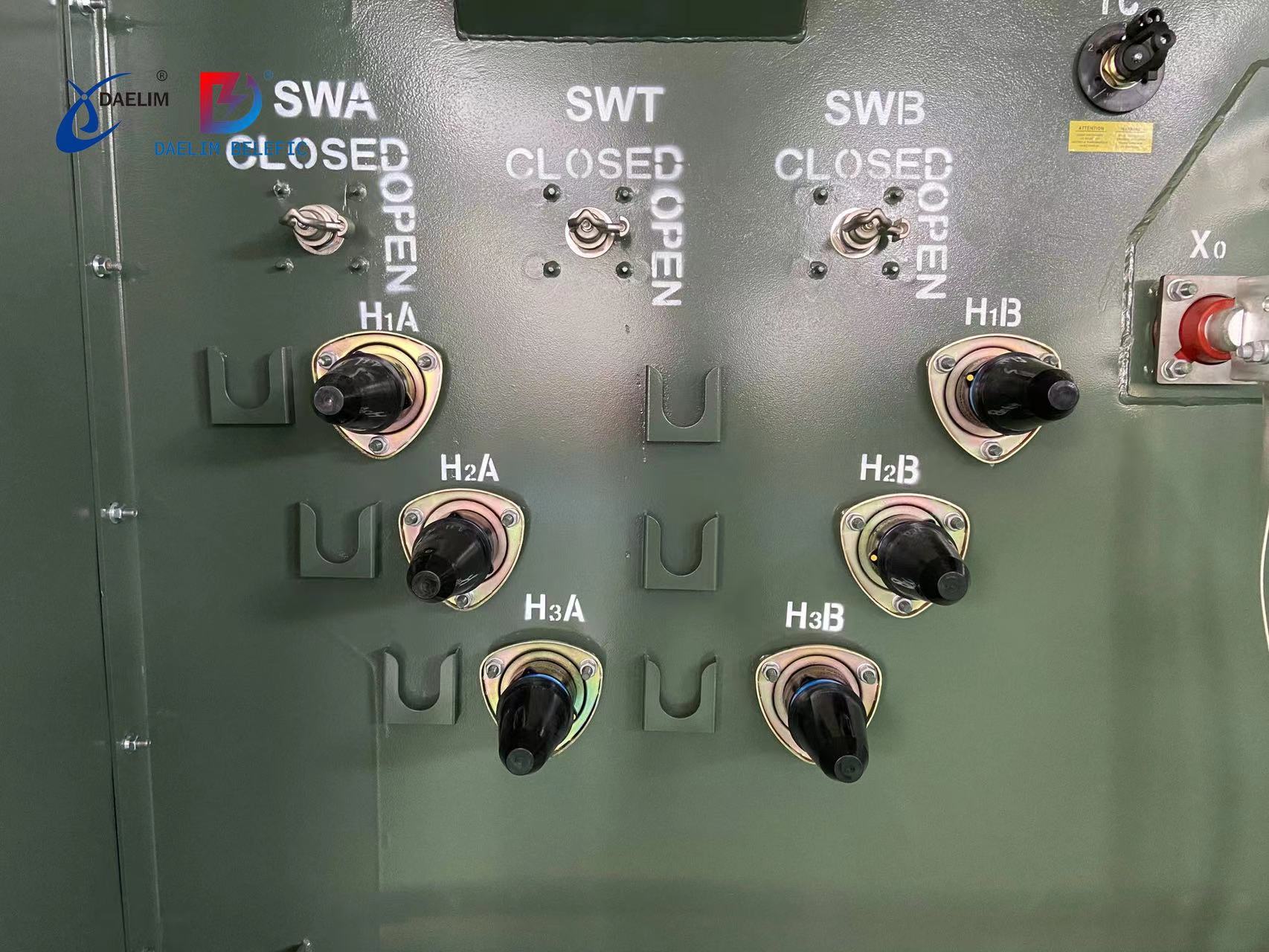
For the low voltage terminals, holes can be designed based on ANSI/IEEE standards or based on customers' requirements. There are 8 holes, 10 holes, 12 holes, and other designs. More holes can pass more current, but will higher the production cost.

Windings of Padmounted Transformers
The primary winding is the coil that draws power from the source. The secondary winding is the coil that carries the power to the primary winding. To deliver power to the load, the secondary coil delivers the transformed or changed voltage.
Transformer Tank of Padmounted Transformers
The volume of oil inside the transformer increases when the transformer is loaded and when ambient temperatures rise. Transformers provide adequate space for the expandable transformer oil in the conservator tank.
Among its uses are some types of oil-filled transformers, capacitors of high voltage, fluorescent lamps, circuit breakers, and switches of high voltage. As a coolant, it is able to serve three purposes: insulating, suppressing corona discharge and suppressing arcs.
Transformer Oil of Padmounted Transformers
Despite modern technology, mineral oil still fills most transformers. In most of the projects, Daelim uses mineral oil type II, which is available in the ambient temperature from -45℃ to +45℃.
Daelim can also prepare the solution with vegetable oil if necessary. Vegetable oil will improve the cost but it is more environmentally friendly. The cooling system with vegetable oil is KNAN or KNAF, different from mineral oil (ONAN or ONAF).
Learn more: Transformer oil
The thermometer of Padmounted Transformers
Oil Thermometer provides accurate measurement of the oil temperature within transformers, also known as transformer oil temperature indicators. It’s for a clear check on the working status of the transformer and makes sure it is working perfectly.
Pressure Relief Valve of Padmounted Transformers
The Transformer industry generally classifies pressure relief devices as safety or protection equipment. Devices such as these are used to control oil pressure surges within oil-cooled transformer tanks that breathe freely.
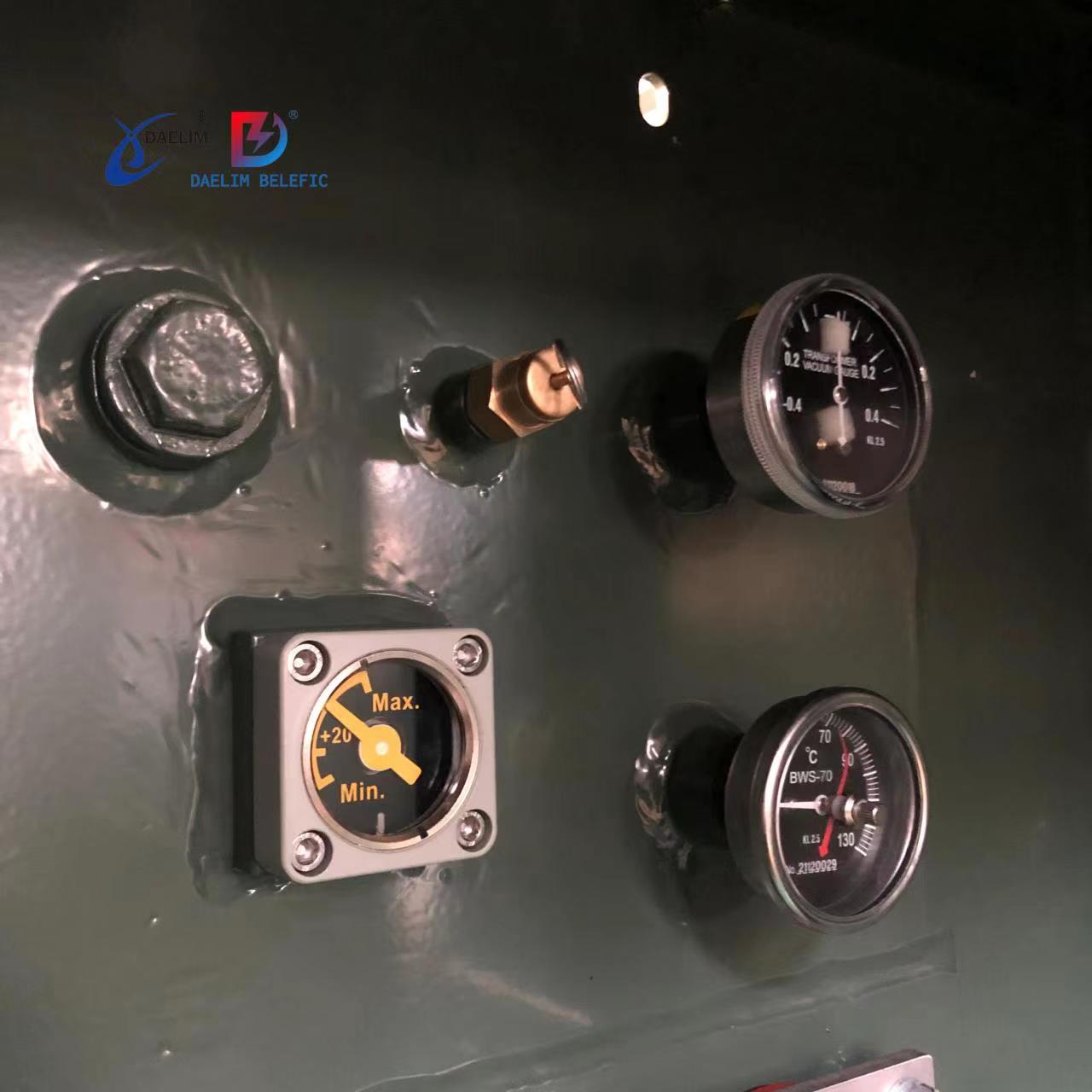
Cooling fans of Padmounted Transformers
Transformer cooling fans are sturdy, weatherproof fans for accelerating the cooling process in oil-cooled electrical transformers. They circulate air around the exterior of the transformer's radiator as oil works its way through the inside to dissipate heat and reduce the operating temperature of the transformer. Most of the Pad-mounted Transformer doesn’t need cooling fans, but if you want ONAF as cooling systems, Daelim will add cooling fans as a customized design.
Tap Changer of Padmounted Transformers
The purpose of a tap changer is to regulate the output voltage of a transformer by altering the number of turns in one winding and thereby changing the turns ratio of the transformer.
The tap changer is placed on the high voltage side because: ... Because of high voltage the current through the HV winding is less compared to LV windings, hence there is less “wear” on the tap changer contacts. Due to this low current, in the on-load tap changer, the change over spark will be less.
For Pad-mounted Transformers, customers usually use 5 taps (±2×2.5%). 7 taps and J-tap Tap Changer are also available.
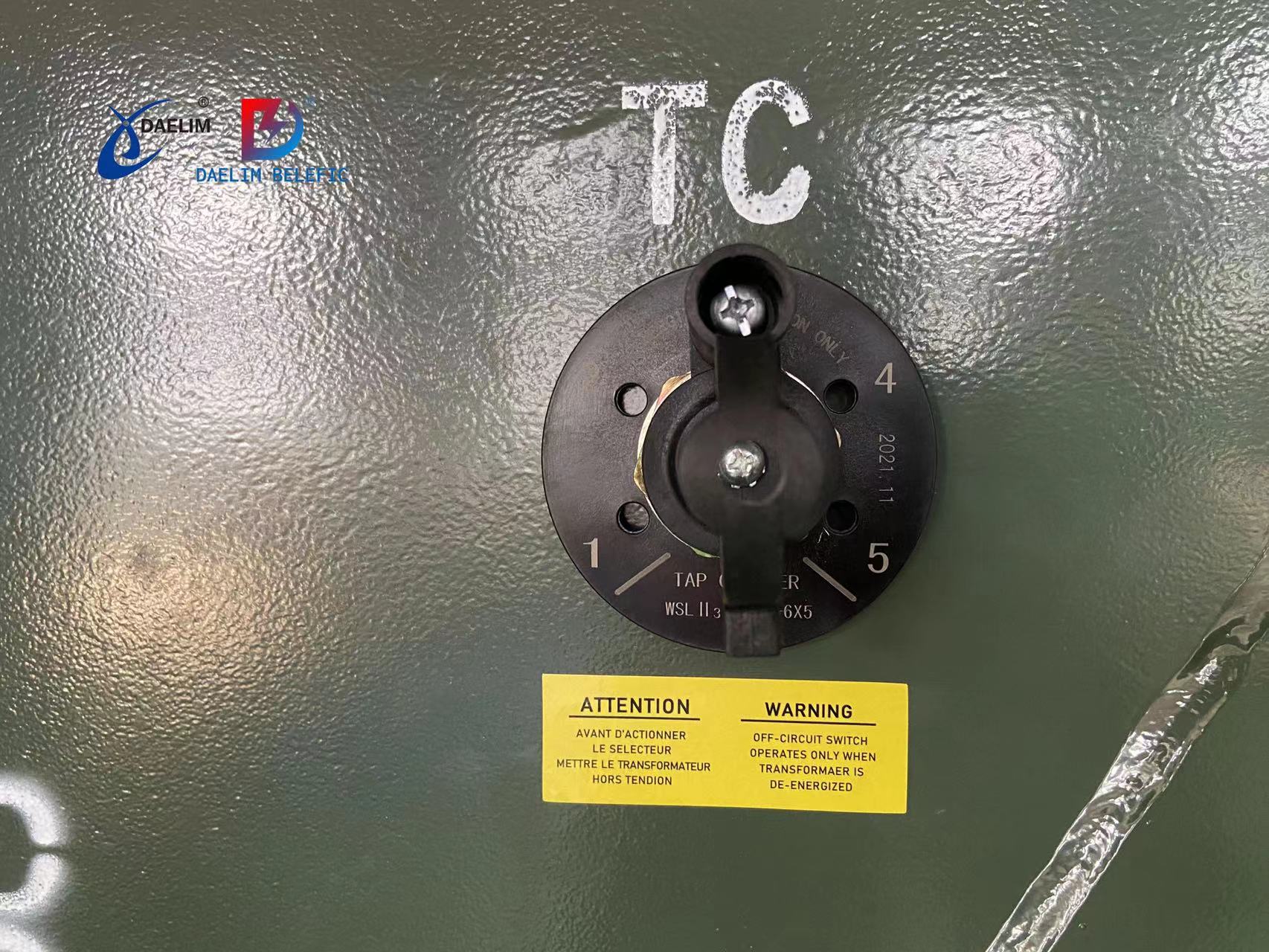
Terminals of Padmounted Transformers
In all transformers, the H terminals are always the high voltage terminals and the X terminals are always the low voltage terminals. Either can be designated primary or secondary depending on which is the source and which is the load.
Spade Terminal of Padmounted Transformers
Spade terminals are designed to mate, connect, or terminate a single wire to a screw or stud-type electrical connection. The shape of the spade connector resembles a fork, making it easy to connect or disconnect the spade terminal to the electrical connection.
Spade terminals are used to connect or terminate a single wire while it is connected to a stud or screw-type used for an electrical connection. Since the shape of the spade is similar to a fork or spade, it's shape allows you to quickly set screws in place.
Nameplate of Padmounted Transformers
The nameplate always indicates the size of the transformer in terms of how much apparent power (rated capacity) it is designed to deliver to the load on a continuous basis. Also includes the high voltage, low voltage, efficiency, taps, connection group, etc... Daelim engineer team will prepare the drawing and nameplate after confirming the advance payment, send them to the customer for confirmation to make sure our products will be correct.
Transformer Rated Capacity of Padmounted Transformers
For Pad-mounted Transformer rated capacity, Daelim can produce from 75kVA to 5000kVA. In Bitcoin Mining farms, the most wildly used capacities are 2550kVA, 3000kVA, and 3750kVA. In a simple way, 4 units of 2550kVA Pad-mounted Transformer can supply a 10MW Bitcoin Mining site. If you have any questions in calculating the purchased quantity of transformers, feel free to contact us for technical support!
Transformer Voltage Ratings of Padmounted Transformers
The following is a list of some conventions for specifying transformer voltage ratings:
High voltage also called input voltage, means the voltage out of the substation transformer and input to the Pad-mounted Transformer.
In the North American market, there are 3 wildly used High Voltage classes for Pad-mounted Transformer: 15kV class, 25kV class, and 35kV class.
For 15kV Class, customers usually require 12.47kV, 13.8kV as the input voltage.
For 25kV Class, usually are 24.94kV.
For 35kV Class, most the customers need 34.5kV.
Low voltage also called output voltage, is the voltage out of the Pad-mounted Transformer and power up the miners.
In the North American market, the output voltage of Pad-mounted Transformer is usually 480/277V, 415/240V. There are also other voltages based on different miner's needs. Daelim engineer team can design based on your project needs. Power up the miners and make money for our customers is what we do.
Transformer Rated Frequency of Padmounted Transformers
The rated frequency will also be indicated on the nameplate (usually 60 Hz for the United States). Operating the transformer at a lower frequency will increase the core flux unless the voltage is reduced, this could cause magnetic saturation of the core and overheating due to increased hysteresis and eddy current losses.
Maximum Temperature Rise of Padmounted Transformers
The maximum allowable temperature rise for the transformer is also shown on the nameplate and is based on an assumed ambient temperature of 30℃.
Insulation Class of Padmounted Transformers
The insulation class indicates the type of transformer insulation. For Pad-mounted Transformer, the insulation class are usually 15kV, 25kV, and 35kV.
Transformer Percentage Impedance of Padmounted Transformers
Percent impedance is a representation of the impedance of the windings referred to one side of the transformer. This number is the percentage of rated voltage that must be applied to the high side to cause a rated current on the low side when the low side is shorted. For ANSI/IEEE standard, the impedance is 5.75%.
For the Pad-mounted Transformer in the Bitcoin Mining farms, Daelim has a standard design, with Bay-O-Net fuses, ELSP fuses, 5 taps Tap Changer(±2×2.5%), 4 positions Load-break Switch, with mineral oil and ONAN cooling system.
If you have special requirements on the components, welcome to share with the Daelim team, our engineer team will design the transformer based on what you need.

